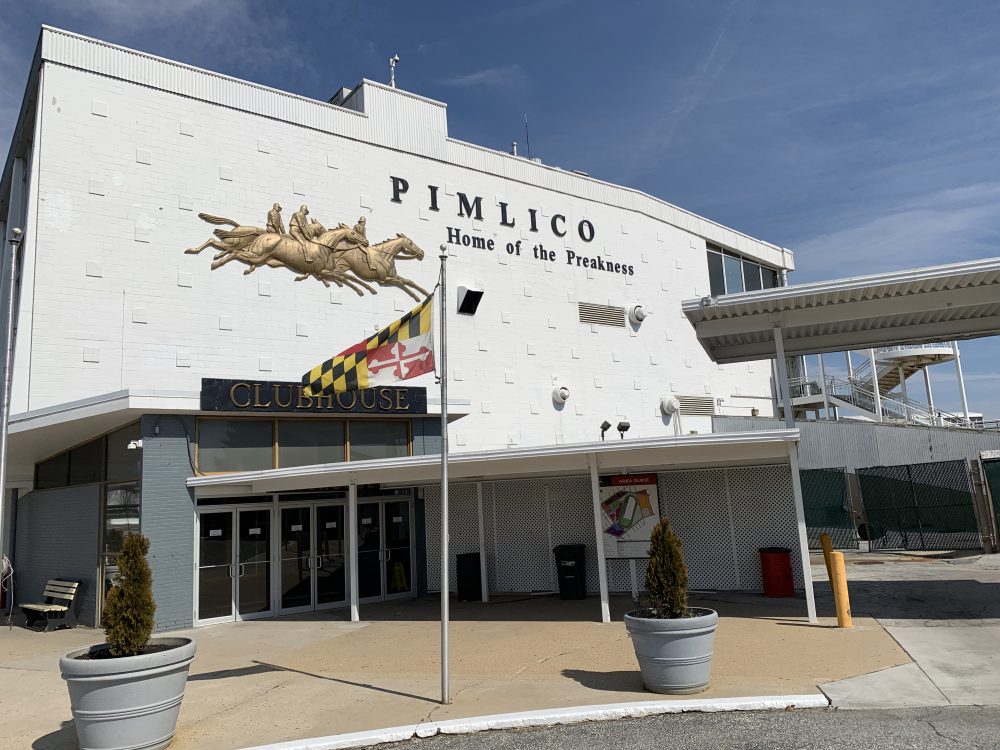By JESSIE SCHWARTZ
Capital News Service
BALTIMORE – Wearing shirts emblazoned with the phrase “horse racing” but with “racing” crossed out and “killing” in its place, about 50 members of Horseracing Wrongs, a non profit organization working to end horseracing, lined the sidewalk outside Pimlico Race Course on Saturday afternoon just hours before the second leg of the Triple Crown, The Preakness, was run.
“Horses die, ask us why,” some protested through bullhorns as racegoers walked past.
As they did, word came that a three-year-old colt in the sixth race of the day, Havnameltdown, buckled forward, threw jockey Luis Saez off his back and continued running around the final turn in clear distress. The chief veterinary officer Dr. Dionne Benson and others determined the injury was to his left front leg and was inoperable. They decided the horse should be put down, according to a statement from 1/ST Racing, which owns and operates the track.
“People are shocked at how many horses are dying at these tracks,” said Jennifer Sully, the Maryland organizer for Horseracing Wrongs. “Sadly, the horses will keep dying until horse racing ends because it is a lethal industry. And it’s built into the system.”
On Derby Day at Churchill Downs two weeks ago, two horses were euthanized after being injured in races on the undercard. And five others were put down after training and racing incidents at the track in the days leading up to the Derby.
“A two-year-old horse is equivalent to a six-year-old child,” Sully said at their protest. “So, it’s like putting a six-year-old child into the Olympics and beating the heck out of them to win.”
The deaths reminded of the sport’s unsavory problems again. In 2021, Bob Baffert, who trained Havnameltdown, was banned from the Derby and Belmont Park in New York, where the third leg of the Triple Crown is held, after his Derby winner, Medina Spirit, was found to have drugs in its system. Baffert has 16 Triple Crown wins. He was back at Pimlico this year for the first time in two years.
Horseracing Wrongs is one of the several groups standing up for the horses. The organization was founded in New York in 2013 by Patrick Battuello, one of the nation’s foremost experts on horse deaths. He has testified in front of the New York State Senate.
Pressure on the sport has resulted in some heightened safety measures for horses. Leading up to this year’s Preakness, there was a new level of veterinary oversight in order to ensure the horses’ safety. The horses were observed on the track and checked three to four times a day in the week leading up to the race.
Train John Salzman had Coffeewithchris in the Preakness.
“We’re all for the safety, but we do all have to work together,” Salzman said. “The vets did work with me. They came back whenever they were cooled down and everything was good.”
Coffeewithchris pushed the pace of the winner National Treasure, trained by Baffert, in the middle of the race, but ran out of speed. He did finish, though, last.

